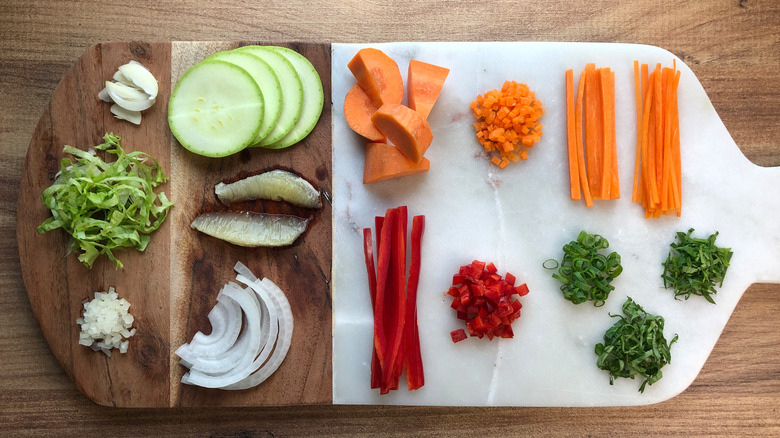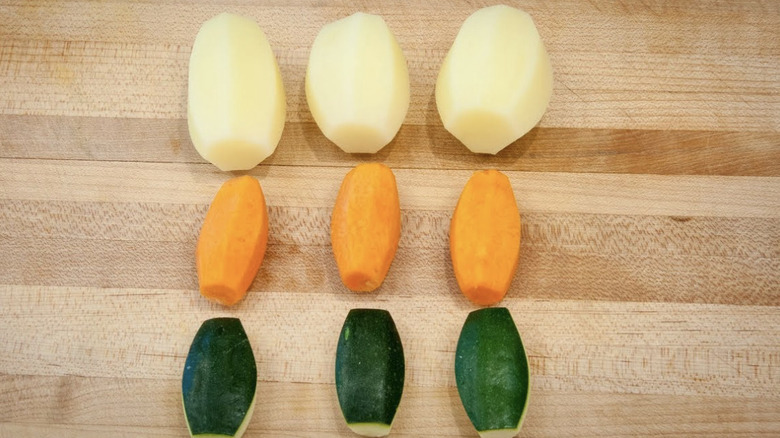What Is The Tournée Vegetable Cut And Why Is It So Uncommon?
When a person enrolls in culinary school one of the first things they learn is how to properly use a knife. Once they've learned how to hold it, they learn about all of the different ways to cut ingredients. And since practice makes perfect the student begins to cut — a lot. Vegetables are cut into planks, which are cut into strips, which are then cut into dice. Carrots become coin-shaped or sliced on the diagonal. Students learn to make every single cut perfect, because this is the first step to achieving even cooking, and before they know it, these greenhorns can slice and dice in their sleep.
You're likely familiar with cuts such as dice, julienne, and chiffonade, but there are many more. You might recognize them from meals in restaurants but perhaps have never heard the names which include baton, brunoise, and paysanne. Why so many cuts, you may ask? Knife skills and precise cuts showcase the expertise of those making your food. It is a sign of excellence and professionalism. Unless they've gone to culinary school or are very knowledgeable in the food world, most people probably don't recognize the tournée cut by name or appearance. Although the tournée is just as practiced by schooled professionals as the other cuts, it is rarely used outside of the classroom.
The time-consuming tournée
Tournée is a French word meaning "turned" and refers to the action a chef takes when preparing this vegetable cut. It is most commonly used on root vegetables like potatoes, carrots, and turnips. To make a tournée cut, vegetables should first be cut into two-inch pieces, with the top and bottom cut flat. Then, they are sliced from top to bottom in a rounded motion, carving the vegetable into a shape that resembles a football. This is usually done with a curved paring knife, but a regular paring knife also works. A proper tournée has seven even sides and a circumference of about three-quarters of an inch.
Not all chefs are trained in culinary school, which means that not all chefs have mastered this knife cut. And with the time it takes to complete just one tournée cut, it's understandable why these chefs don't learn it and why their staff doesn't practice it. The rapid-fire pace of a restaurant kitchen doesn't usually allow for it. If you do happen to see tournéed vegetables on your plate at a restaurant, rest assured that someone behind the scenes cares a great deal about what is being presented to their customers and has spent hours and hours of time in practice to be able to get those parsnips just right.

